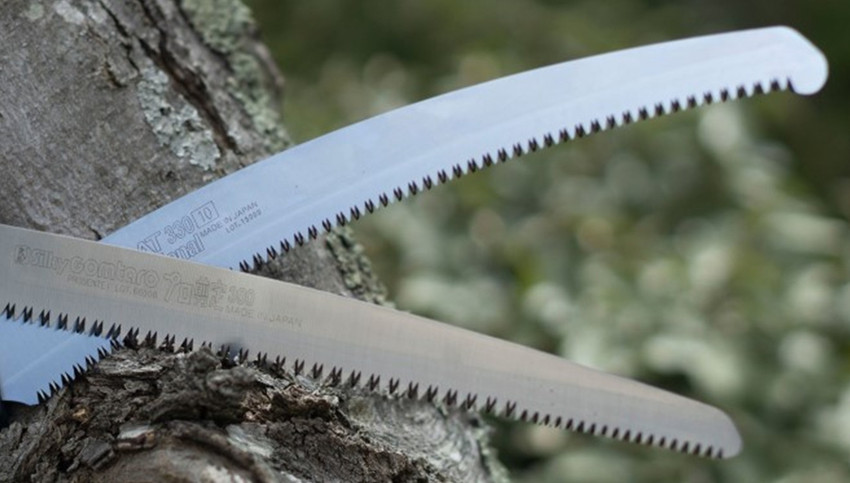Straight versus Curved Blades: Which One is Right for You?
Drawing a Silky saw towards you physically forces the saw’s teeth into the wood fiber.
Silky saws cut on the pull stroke, which pressures the blade naturally and puts less stress on your elbow joint, while also cutting faster and more efficiently than a saw that cuts both directions.
Curved Blades
Curved blade saws cut through wood faster, making them ideal for projects like cutting a downed tree out of a trail, clearing blowdown from a big storm, or removing burnable material from a section of land to mitigate the risk of forest fire. For pruning, generally, a curved blade works best. If you’re an arborist who routinely cuts overhead, a curved blade saw will get the job done efficiently, even when you’re sawing in awkward positions.
Straight Blades
When precision is paramount, a straight blade is the tool for the job. Woodworking, or orchard pruning where cuts need to be extremely accurate, choose a straight blade saw. If you’re cutting on a table, which is typical of many woodworking projects, a straight saw will give you best-in-class control.
Conclusion
Which saw you choose is primarily a personal preference. In Europe, many arborists use straight blades. And in Japan, straight blades are still the most common across categories. In North America and amongst younger users, curved blades reign.

